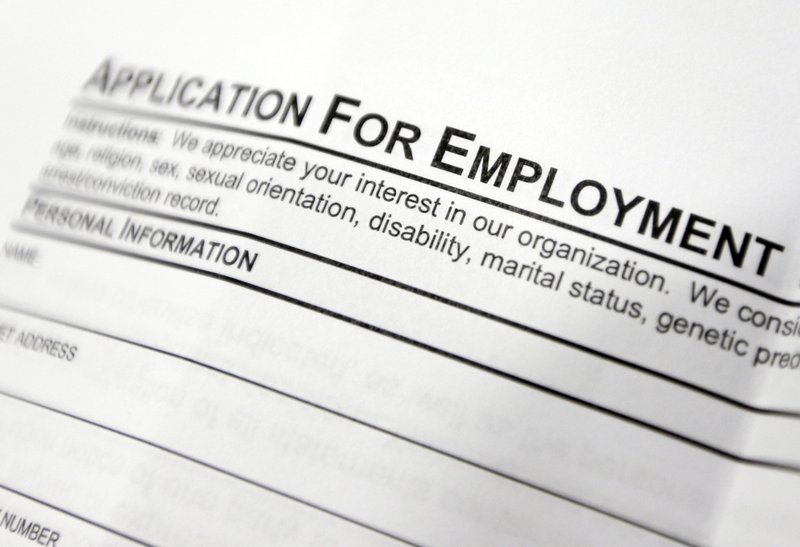WASHINGTON -- Initial claims for unemployment benefits fell to near a seven-year low last week, the Labor Department said Thursday.
Weekly applications for unemployment aid dropped 11,000 to a seasonally adjusted 304,000, the Labor Department said Thursday. That's not far from a reading of 298,000 two months ago, which was the lowest since 2007, before the recession began.
The four-week average, a less volatile measure, dipped 3,500 to 311,500, the second-lowest level since August 2007. Applications are a proxy for layoffs, so the low readings indicate that employers are letting go of fewer workers.
The figures are the latest sign that the job market is steadily improving. Employers are adding jobs at a healthy clip, and the unemployment rate is at a 5 1/2-year low.
"The declining trend in claims is very encouraging and is further evidence that the strong payrolls number we saw for June is not a fluke," said Ryan Sweet, senior economist at Moody's Analytics Inc. in West Chester, Pa. "The labor market is gaining momentum. This is consistent with strong gains in consumer spending."
The number of people receiving benefits ticked up 10,000 to 2.58 million. That's down from about 4.5 million a year ago. Much of that decline has occurred because an extended benefits program expired at the end of last year.
A separate government report Tuesday showed that total layoffs in May fell below 1.6 million, lower than even pre-recession levels. And more workers are quitting their jobs, the report found, which can be a sign of confidence, since most workers quit when they have new positions or are confident they can find one.
In addition, the number of open jobs jumped to the highest level in seven years, a sign that companies could step up hiring in the months ahead.
Employers, meanwhile, added 288,000 jobs in June, the fifth straight month of job gains above 200,000. That's the first such stretch since 1999. The unemployment rate fell to 6.1 percent, the lowest since September 2008.
However, the steady hiring gains have yet to prompt big increases in wages, which have barely kept pace with inflation since the end of the recession five years ago.
But more people with jobs means more paychecks, which could enhance consumer spending and growth. After a sharp contraction in the economy in the first three months of the year, most economists expect growth to return in the April-June quarter and top 3 percent at an annual pace in the second half of 2014.
In a separate report Thursday, the Commerce Department said U.S. wholesale stockpiles rose in May at the weakest pace in five months as companies kept their supplies in line with slower sales.
Wholesale stockpiles grew 0.5 percent in May, down from a 1 percent surge in April. Big gains in inventories of autos, lumber and metals drove the latest increase.
Sales at the wholesale level, meanwhile, rose 0.7 percent, down from 1.3 percent in April. Auto sales jumped 1.1 percent while sales of computers and electrical equipment fell.
The slower pace of sales and restocking suggests that consumer and business demand weakened a bit in May. But the figures also show that companies aren't building up large stockpiles, which can leave them with unsold goods if sales slow further.
And May's increase in inventories can contribute to economic growth because it means more orders of factory goods, which increases manufacturing output.
Thursday's report covers inventories held at the wholesale level. Next week, the government will detail inventories at the manufacturing and retail levels.
Information for this article was contributed by Christopher S. Rugaber of The Associated Press, by Jim Puzzanghera of the Los Angeles Times and by Shobhana Chandra of Bloomberg News.
Business on 07/11/2014
